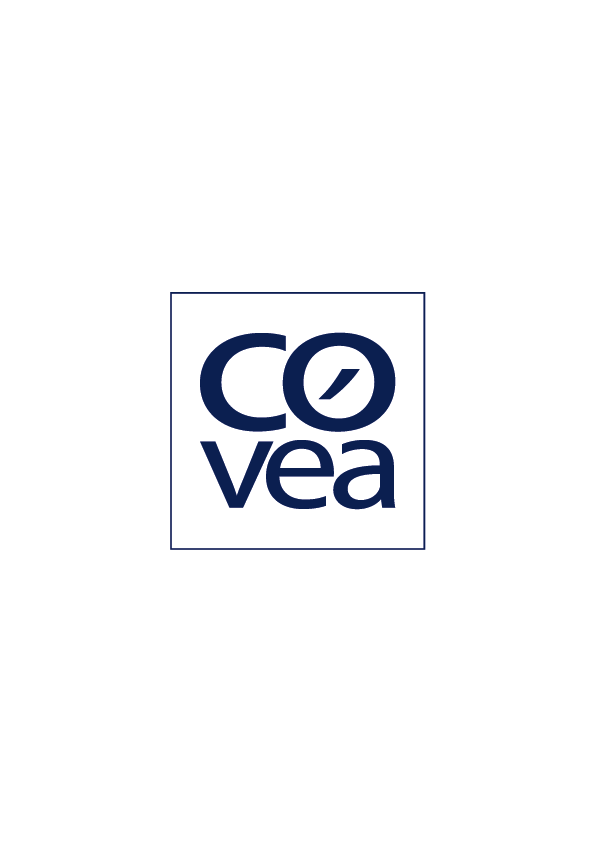Sustainable vehicle repairs: an environmental, social and societal issue
- Innovation
- Covéa
27 June 2024
The advantages of sustainable vehicle repairs
Reducing the environmental impact of human activity is a shared responsibility in which insurance companies have a role to play, particularly as regards handling motor insurance claims.
Sustainable vehicle repairs are one way of reducing this impact, with the aim of repairing vehicles involved in an accident and damaged parts rather than replacing them. If this is not possible, preference should be given to reused parts to limit use of new parts.
Sustainable repairs: effective and environmentally friendly
Let’s take the example of a damaged windscreen. If the location and size of the chip allow, the windscreen can be repaired using a technique that has been around for over 20 years.
Le remplacement des pièces automobiles est encore trop souvent privilégié face à leur réparation, notamment dans le secteur du vitrage. Pourtant, des techniques de réparation performantes existent pour éviter, par exemple, de remplacer un pare-brise en intégralité. Nous vous emmenons chez France Pare-Brise, une entreprise spécialisée dans la réparation des vitrages.
Bonjour Dominique, bonjour Juliette. Est-ce que tous les pare-brises peuvent être réparés et comment cela fonctionne ?
Depuis 20 ans, la technique de réparation d'impact est régie par une norme, la norme AFNOR R19601. Grâce à elle, on sait déterminer la réparabilité des impacts par leur positionnement sur le pare-brise et par leur taille, qui doit être de 40 mm maximum.
Quelles sont les étapes de la réparation ?
Une réparation d'impact se déroule en plusieurs phases. On commence par déterminer si l'impact est réparable sur le pare-brise. Pour cela, on utilise un gabarit pour mesurer sa taille et voir son positionnement, car on ne pourra jamais réparer si c'est dans le champ de vision du conducteur. Une fois cette étape faite, on peut commencer à préparer notre réparation et préparer la zone d'injection en nettoyant le pare-brise et en retirant toutes les impuretés à l'intérieur même de l'impact. On va pouvoir vérifier ainsi que la résine de réparation va bien rentrer à l'intérieur de l'impact lors de la phase suivante, pendant laquelle on va injecter une résine de réparation. Une fois cette étape passée, on va ajouter par-dessus une seconde résine qu'on appelle résine de finition et on va utiliser une lampe UV qu'on va placer autour de l'impact de manière à faire polymériser cette résine et la rendre aussi dure que le verre. Une fois cette étape terminée, on va utiliser un produit de polissage pour rendre à cette résine un aspect totalement cristallin et avoir un visuel pour notre client proche de l'aspect d'origine.
Et au niveau de la solidité, y a-t-il une différence ?
Non Juliette, pas du tout. Une fois la résine injectée et polymérisée, le pare-brise retrouve sa solidité d'origine et la surface du pare-brise est totalement lisse, permettant le passage des essuie-glaces.
Quels sont les avantages de réparer plutôt que de remplacer ?
Il vaut mieux réparer tout simplement parce que c'est plus rapide, moins cher et en plus, c'est écoresponsable. Pourquoi écoresponsable ? Tout simplement parce que ne pas refabriquer un nouveau pare-brise neuf évite la production de 17 kg de déchets en moyenne par pare-brise.
Merci Dominique pour ces explications. Avec plaisir Juliette.
La réparation de pare-brise est une technique qui existe depuis 20 ans. Elle est pourtant trop peu utilisée au profit du remplacement à neuf, facturé plus cher. Chaque année, nos réparateurs agréés évitent le remplacement de 60 000 pare-brises, ce qui représente 960 tonnes de CO2 et 800 tonnes de verre que l'on évite de mettre dans le circuit du recyclage. Pour en savoir plus, rendez-vous sur notre site covea.com.
This effective process makes the windscreen look like new, with an almost invisible finish. This makes it preferable to replacing the windscreen, as manufacturing a new windscreen has a significant impact on the environment. It requires sand, which is turned into glass, as well as plastic for the protective layer, and the energy needed for manufacture creates greenhouse gases.
If repair is not possible, preference should be given to reused parts to limit use of new parts. These parts are recovered and prepared for use at end-of-life vehicle recycling centres, in a process subject to very specific criteria that determine which parts can be reused. This regulatory framework guarantees that reused parts meet the same quality and safety standards as new parts.
While reused parts are becoming are becoming more widely used in motor repairs, particularly since France’s 2015 Energy Transition Law encouraging repair companies to offer this as an option to their customers, their use is still not widespread enough. The development of the recycling industry should help to increase their use.
Je t'emmène dans mon allée préférée, c'est l'allée des moteurs. Je trouve ça super beau, avec à peu près 5000 moteurs en stock.
Aujourd'hui, je vais te parler d'Émilie, qui travaille dans un centre VHU à Amiens. Ce centre remet à neuf des milliers de pièces automobiles pour pouvoir les réutiliser. Elle nous explique toutes les étapes mises en place pour garantir des pièces automobiles quasi neuves.
Nous sommes à Amiens, dans un de nos centres VHU, où nous commercialisons et produisons des pièces auto recyclées sous la marque Back to Car. Une casse automobile aujourd'hui, ça n'existe plus. Il faut avoir l'appellation VHU, donc un agrément par l'État. Nous sommes dans la zone d'expertise, une étape qui n'existait pas avant. C'est ici que nous décidons quelles pièces sont encore fonctionnelles et quelles pièces peuvent être démontées et remises sur le marché.
Je te présente Rémi, l'expert automobile à Amiens. Il vérifie tout ce qui concerne les pièces de carrosserie. Il redémarre le véhicule pour voir s'il fonctionne correctement et si toutes les pièces électroniques et techniques sont encore fonctionnelles. Ensuite, nous passons à la deuxième étape industrielle : la dépollution du véhicule. Cela consiste à extraire tous les liquides et fluides du véhicule, comme le carburant, le liquide lave-glace et le liquide de refroidissement. Rémi perce ensuite le réservoir.
Après la zone de dépollution, le véhicule passe en zone de démontage. C'est là que les équipes extraient les pièces auto définies dans le listing de démontage de l'expert. Nous avons aussi un pôle dédié à l'électrique, car nous commençons de plus en plus à démonter des véhicules électriques. Cela fait partie des enjeux de l'automobile du futur.
Après le démontage, les moteurs et boîtes de vitesse passent en zone de nettoyage. Les petites pièces sont nettoyées pendant le référencement et à l'expédition. Une fois démontées, les pièces sont photographiées, référencées et mises informatiquement dans notre logiciel de stockage.
Nous sommes maintenant dans la zone de stockage, spécifique à la carrosserie. Tu vois toutes les portières, capots, pare-chocs, etc. Par exemple, voici un feu. Il est étiqueté avec la marque, le modèle, la mise en circulation et la catégorie, car il y a une différence entre phare et feu. Avant d'être expédiée, chaque pièce est marquée pour assurer une traçabilité parfaite, même hors du centre.
L'utilisation de pièces automobiles recyclées est de plus en plus encouragée, notamment par les assureurs lors de sinistres, comme le groupe Covéa, un assureur mutualiste comprenant les marques MAAF, MMA et GMF. Covéa propose déjà à ses assurés des réparations plus durables grâce à son réseau de recycleurs. Produire une pièce neuve demande plus de ressources, de matières premières et d'énergie, alors qu'une pièce auto recyclée demande beaucoup moins d'énergie et très peu de matières premières.
Il y a aussi l'aspect économique. Une pièce auto recyclée est en moyenne 75 % moins chère que le neuf. Légalement, elle a une garantie de conformité d'un an. Certaines personnes vont même plus loin en garantissant leurs pièces à vie. Nous, dans notre cas, garantissons nos pièces à vie. Quand vous allez chez votre garagiste ou votre réparateur, n'hésitez pas à demander des pièces de réemploi. Ils sont dans l'obligation de le faire, et votre porte-monnaie vous remerciera, tout comme la planète.
Know-how to boost the local economy
Sustainable vehicle repairs also have a positive economic and social impact, supporting local jobs for qualified workers that cannot be moved elsewhere. Opting for repair and using reused parts helps to support local recycling and repair businesses.
Furthermore, the values underlying sustainable repairs are giving new impetus to these businesses, which have faced challenges, making repair the favoured option. Unlike replacement using new parts, repair entails moulding, fixing and painting the surface to make it look like new. It takes a long time to perfect these skills, which deserve to be recognised for their true value.
Laying the foundations for developing sustainable vehicle repairs
Sustainable vehicle repairs – which are beneficial for the environment, society and the economy – are gradually becoming more widespread. Nonetheless, in 2023, just 29% of parts damaged during an accident or collision were repaired, and just 4.9% of replacement parts were reused parts. Covéa has looked into various ways of making sustainable repairs the preferred choice.
Responding to supply and demand
The various parties involved are seeing a convergence of interests and insurance companies are at the forefront in terms of supporting the growth of sustainable vehicle repairs.
They can help to increase supply by ensuring that vehicles involved in accidents are available to recyclers to recover more used parts. They also need to help them to develop, define their goals and familiarise themselves with the concept of optimised delivery rounds, which is essential in order to make parts more available.
In terms of demand, insurance companies can encourage repair companies in their network to use a certain amount of reused parts, while also reassuring their policyholders about the quality of these parts. When their vehicle goes in for repair, policyholders are free to choose whether or not they want to use reused parts. Even though people are becoming more aware of the environmental considerations, traceability and safety are still key concerns. MAAF, MMA and GMF strive to continually make their policyholders more aware of the importance of sustainable repairs. They can also find out which parts can be reused and what quality control measures are taken.
As a leading name in motor insurance, Covéa aims to involve all parties concerned, including repair and bodywork specialists, damage appraisers, recyclers, training centres and policyholders, as well as manufacturers, which receive regular information about vehicle repairability from Covéa’s technology centre Cesvi France, which is analysed by their staff
« Insurance companies are working hard day after day with their partners to improve their performance and tackle the carbon impact of the repairs they cover for their customers. This means they play a key role in advancing sustainable repairs. »
Keeping up with new developments and innovation
The increasing complexity of repairs means that repairers sometimes choose to replace rather than repair. The technology involved in vehicles and their parts and materials is evolving continually, particularly with the development of advanced driver assistance systems (ADAS) and electric cars. This makes it vital to keep track of the latest developments.
Created 25 years ago, Cesvi France is a training and technical research centre focusing on motor insurance at the cutting edge of research and development. Covéa is the only insurer in France to have a centre of this kind.
Cesvi France analyses new vehicles and develops repair techniques for plastic, aluminium, optical instruments, alloy wheels and onboard electronics. The technology centre has also developed an exclusive process using 3D printing to produce small fasteners that car manufacturers do not sell separately, avoiding having to replace entire units.
In terms of innovation, AI helps to improve the repair process by automating certain tasks such as analysing repair estimates, making it possible to obtain an accurate valuation within a short time frame. By tailoring repairs to what is needed, AI provides greater speed, efficiency and transparency, with less of an impact on the environment. Covéa is experimenting in particular with a scanner that uses AI to assess vehicle damage caused by hail in just a few minutes.
Prioritising training
Sustainable vehicle repairs will be able to gain traction by addressing the issues of skills development and promoting best practices. Training is therefore key in ensuring that repairs are done well and/or reused parts are used properly.
Cesvi France is at the forefront, training 2,200 repair professionals each year – 40% car experts and 60% repairers – in five areas: electronics, electrical fittings, bodywork, mechanics and paintwork. They learn to repair rather than replace, and in particular to “repair well” by choosing the right techniques, products and equipment.
Finally, although it is important to support existing repairers and bodywork specialists by means of ongoing training, providing training for young people is another major way of adapting to the expectations of the sector and society, as well as attracting new audiences.
In 2023, 71% of the 521,000 vehicles involved in accidents owned by MAAF, MMA and GMF policyholders were repaired by Covéa’s repair partners, who receive regular training from Cesvi France. The figures in full can be found in Covéa’s white paper (in French).
Read the press release (in French):
-

-

- Governance
- Covéa
2023 Integrated Report: Covéa reasserts its leading position and its commitment to a sustainable future
15 July 2024 -

- Governance
- Covéa
Michael Walker has been appointed Group Chief Financial Officer of Covéa
01 July 2024
Our latest publications
View all our publications

